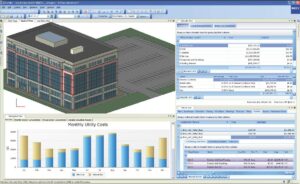The Importance of Preconstruction Meetings
Communication is without a doubt one of the most important aspects of a successful estimating effort. It’s vital to set proper expectations before the project is even off the ground, and it’s equally as critical for all of the involved parties—from the project owners to the subcontractors—to be on the same page as much as possible.
As you’re probably well aware, construction estimating technology has accelerated at a rapid-fire pace in just the past four or five years. While that brings a lot of benefits, such as increased efficiencies and enhanced collaboration, it also brings a lot of potential downsides, too. One of these downsides is unrealistic project owner expectations. Because technology has automated a lot of previously tedious workflows—and because more and more contractors are adopting these tools—project owners often expect more output than ever from preconstruction teams in less and less time.
As much improvement as technology has brought to the construction industry, these types of expectations aren’t always very realistic. At the end of the day, the people building estimates are still just that: people, not robots! There’s only so much that can be done in a single day, and there are often other obstacles that impede the timeline of an estimate that have nothing to do with technology, like being able to source the necessary data from other departments or adjusting for material and labor costs that can fluctuate from week to week.
How do you resolve this issue? How do you reconcile the needs of the owner and the realities of preconstruction? One solution that we’ve heard over and over is: more preconstruction meetings with the project owner on a regular basis. It’s often easy to dismiss project owners as overbearing people who just don’t have the patience to understand that they can’t always say “jump” and hear “how high” every time. But the truth is that project owners also have a massive burden to bear. An article from Stimmel Law, a firm that has represented several cases in construction law and litigation, notes that owners must “supervise the big picture, handle the money, and [try to collaborate with] the general contractor.”
In order to make these two frequently conflicting minds meet in the middle, here are several tips to facilitate difficult conversations and make them a little less intimidating.
Ensure that the owner has access to a visual representation of the numbers you’re working with.
 The Power BI dashboard in DESTINI Estimator is an easy way to show project owners an overview of their project.
The Power BI dashboard in DESTINI Estimator is an easy way to show project owners an overview of their project.One of the biggest blockers to aligning preconstruction and owner vision is that owners often do not understand how preconstruction is arriving at certain numbers. For example, an estimate may come in several thousand dollars higher than what the owner expected due to changes in supply chain lines or material costs. But if all you have is an Excel sheet with rows of digits, that isn’t necessarily going to make sense to an owner the way it does to you.
Having an actual model of the project building with numbers tied to it makes it much easier for a project owner to not only visualize what you’re talking about but also to better follow your line of thinking and understand why you’ve come to one conclusion over another.
Make sure that you’re using tools that can update owners on the fly.
If you caught that Excel reference earlier, there was a reason for it! Although Excel isn’t an inherently bad tool in and of itself, it also may not be the best fit for your team, especially if you’ve been getting more and more feedback about faster turnarounds or updates. When your data is scattered everywhere, and at times maybe even inaccessible, you can’t exactly make changes the moment an owner tells you about them. Or, if something changes right before you’re supposed to show the owner the estimate, it’s not going to be an accurate reflection of the numbers.
Turning to a unified construction estimating software can eliminate both inefficiencies and misalignment that result from hard-to-get-to data.
Finally, make sure to have recurring meetings with the owner.
It goes without saying, but you don’t want to wait until the last second to make the owner aware of significant changes to the estimate. Set up regular meetings with the owner—and ideally other involved parties, like the subs and architects—so that you’re constantly aware of what the other is working on and what the owner is hearing from stakeholders.
If you’re interested in adopting a tool that can help you make tough conversations with owners much easier, just click the button below.

-1.png?width=112&height=112&name=image%20(4)-1.png)















